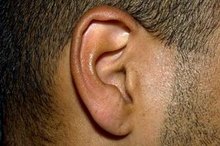Types of Physical Therapy Treatment for Occipital Neuralgia
Occipital neuralgia is a type of headache that includes distinct, sharp pains in your head. There are many treatment options, including physical therapy, that can be used to alleviate your discomfort. Physical therapy comes in several forms, all of which aim to reduce tension and lower your pain level.
Occipital Neuralgia
Occipital neuralgia is a distinct type of headache, characterized by recurring jabs of piercing, throbbing pain on your head. The pain usually originates from the base of your skull. From there it can radiate to the back, side and front of your head. You may also experience pain in your upper neck, behind your eyes and behind your ears. Occipital neuralgia usually causes extreme light sensitivity.
The pain from occipital neuralgia is caused by irritation or damage to your occipital nerves. According to the National Institute of Neurological Disorders and Stroke, this is often the result of trauma to the back of the head, pinching of the nerves by overly tight neck muscles, compression of the nerve as it leaves the spine due to osteoarthritis, or tumors or other types of lesions in the neck.
Diagnosis
About Trigeminal Neuralgia & Ear Pain
Learn More
Distinguishing occipital neuralgia from other types of headaches can be challenging. A proper evaluation will include a medical history, physical examination and diagnostic tests. Typically, diagnosis is done with a MRI or CAT scan. A MRI can show evidence of possible spinal cord impingement from bone, disc or hematoma. A CAT scan can show the spinal canal, its contents and the structures around it.
Physical Therapy
One common form of physical therapy for treating occipital neuralgia is massage. Massaging the painful area can hit key spots of the nerve blood and oxygen flow. The increased blood and oxygen flow can help to heal damaged nerves. Another effective form of physical therapy is completing back and neck exercises. These exercises will help to strengthen the muscles in your back and neck and allow for better posture. Poor posture, specifically being hunched over and bending your neck down, can put pressure on your nerves and lead to headaches.
Other Treatments
Tennis Balls to Reduce Neck Tension
Learn More
There are many options besides physical therapy for treating occipital neuralgia. Conservative methods include heat, rest, anti-inflammatory medications and muscle relaxants. Anticonvulsant medications prescribed by your doctor may also help to alleviate pain. Another option involves the use of an occipital nerve block, which helps to deaden the nerve. If conservative methods prove ineffective and your pain is chronic and severe, you may need surgery to relieve the pain.
Related Articles
References
Writer Bio
Andrew Sheldon is a writer from New York. His writing focuses on health and exercise, but he is knowledgeable in various other areas. Sheldon has published articles on and Fitday.com other online health and fitness publications. He graduated from New York University with a Bachelor of Science degree.







